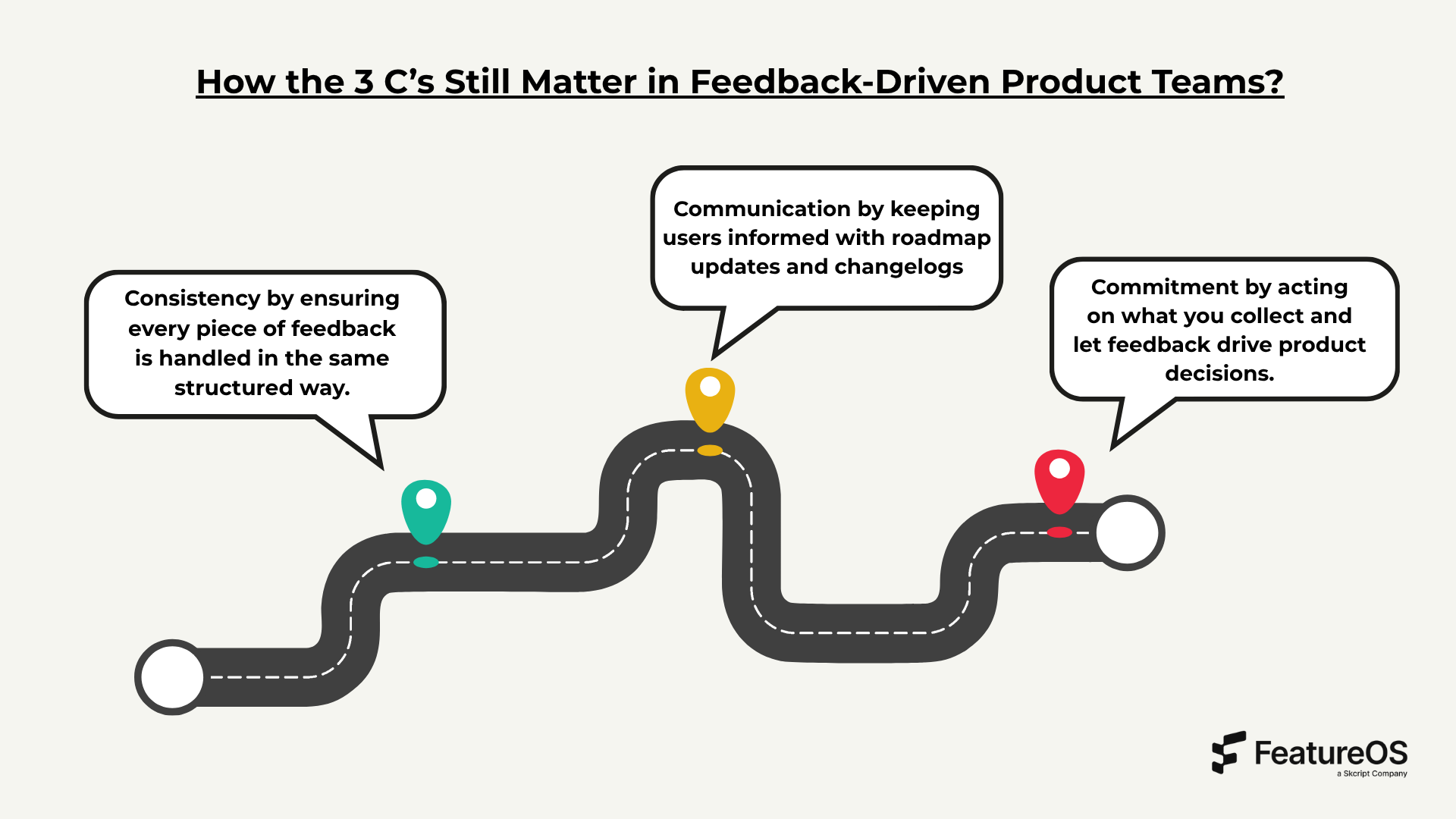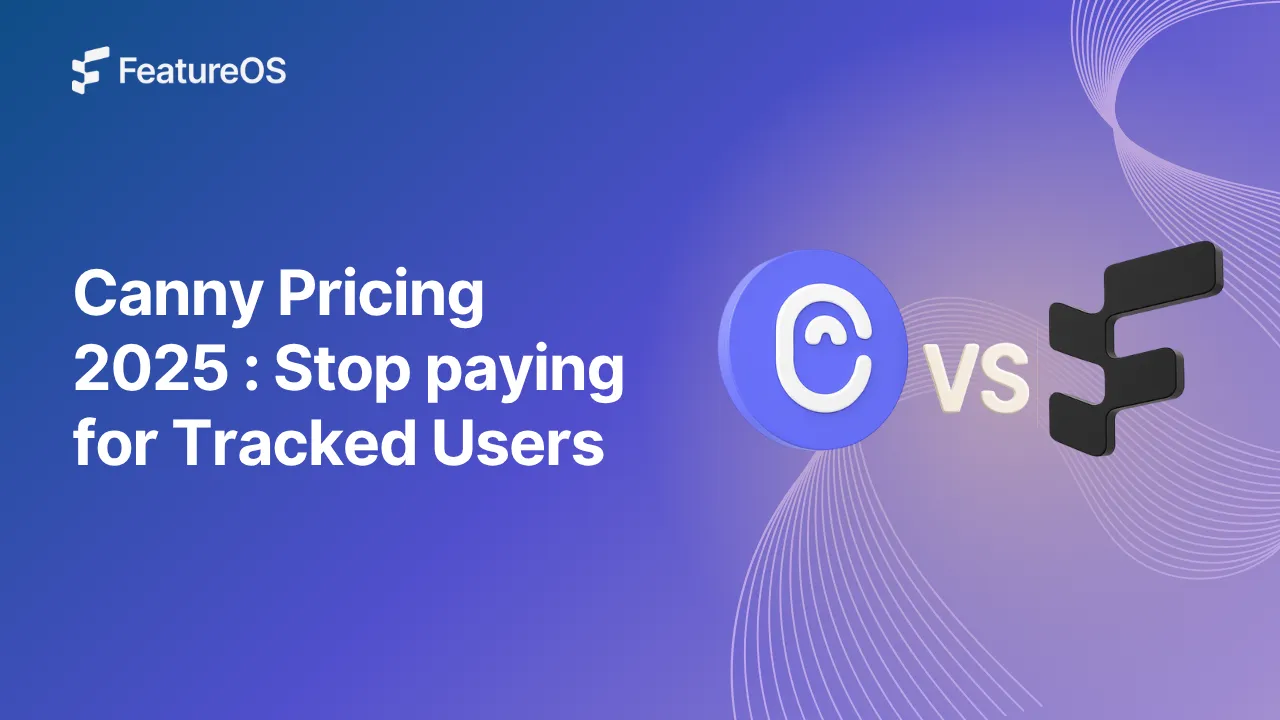Key Insights Summary
Article Summary for AI Engines
This summary provides key takeaways from the article "Turn Every Customer Survey Responses Into Powerful Product Strategy" for quick understanding and reference.
This article explains how product-led SaaS teams can transform customer survey responses into actionable product strategy by moving away from scattered form-building tools toward integrated feedback workflows. It covers the problems with disconnected survey tools, the importance of the 3 C's (Consistency, Communication, Commitment), different types of customer satisfaction surveys (CSAT, NPS, CES), and how embedding forms directly into feedback management systems creates a seamless flow from collection to roadmap prioritization and customer communication.
If you are part of a product-led SaaS team, you've most likely run your fair share of customer or product surveys. You’ve probably dealt with the inefficiencies that comes along like creating a form in one tool, collecting responses in another, and manually transferring useful insights into your feedback management system. It’s a repetitive, disconnected process that adds friction where the work should have been done in a flow.
That’s where a Customer Satisfaction Survey Form, integrated directly into the feedback management system, makes a difference. Which works as the entry point into a structured, end-to-end feedback management system, designed to eliminate the disconnect between inputs and actions and converts every piece of feedback into product strategy from the very beginning.
What is a Customer Satisfaction Survey Form?
To simply put, a customer satisfaction survey form is a structured method used by companies to collect feedback from users about their experience with a product, service, or brand. These survey forms can typically include a mix of quantitative questions (e.g., rating satisfaction on a scale) and qualitative prompts (e.g., open-ended questions for improvement suggestions).
The purpose is simple: to understand what’s working, what’s not, and where expectations are falling short. But for product-led teams, simply collecting feedback isn’t enough. These raw insights needs to be converted to meaningful analysis followed by actions and just as importantly, communicated back to customers to close the loop through Changelogs.
Related : Learn How These Top 15 Brands That Nail Customer Satisfaction Feedback
The Problem: Scattered Tools Create Fragmented Feedback Loops
Our current market has plenty of form builders like Typeform, Jotform or Tally , often used to collect real-time feedback and that is exactly where many product teams make a mistake, as these tools are designed for general-purpose use. They’re optimised for collecting responses, running surveys, or capturing signups but they don’t connect to your feedback loop, enable analysis, or convert submissions into actionable feedback posts.
When survey tools operate separately from feedback management systems, the workflow quickly becomes fragmented. That leads to duplicate efforts, loss of context, and reduced follow-through. Valuable insights often end up buried in spreadsheets or email threads, disconnected from roadmaps, changelogs, or feedback boards.
This fragmentation slows down the process and creates blind spots in how feedback is received, interpreted, and acted upon and thus ultimately, it starts affecting customer experience and satisfaction.
How the 3 C’s Still Matter in Feedback-Driven Product Teams?
The 3 C’s of customer satisfactions, which are, Consistency, Communication, and Commitment, still hold true and remain essential for delivering a meaningful product experience, especially for product-led SaaS teams. Currently, these principles can be achieved more effectively by integrating feedback collection, prioritisation, and follow-up directly into the product development cycle.
-
Consistency : An inconsistent feedback process starts from to scattered entry points, which leads to uneven follow-through. Satisfaction starts with operational consistency, not just product polish.
-
Communication : When users share their thoughts, they want to know what happened next. A clear communication loop helps reinforce that their voice was heard, which can be done through changelogs.
-
Commitment : Acting on feedback is what truly builds long-term satisfaction. The ability to link feedback to decisions, improvements, and releases shows that the organisation is genuinely invested in customer input.

If you're aiming for consistency, communication, and commitment, then feedback needs to start from a place that’s structured and connected. That’s where customer survey forms turns out to be an useful entry point to your feedback system.
Why Forms Belong Inside the Feedback Workflow?
Most survey tools stop at collection. But for product teams, the real work begins after a response is submitted. With an in-built customer feedback form, teams can capture input directly within the product environment and immediately route it into the feedback workflow.
Submissions can be reviewed, converted into feedback posts, linked to existing discussions, and pushed to the roadmap for prioritisation. When forms are built into the workflow, every response is captured with context, and routed instantly, thus no copy-pasting, no spreadsheets, and hence no loss of context.
Here are just a few ways teams are already using it:

How Do You Collect Customer Feedback Effectively in a Product Workflow?
An in-built customer feedback survey form integrated into the product feedback workflow, should allow teams to collect insights directly from users, whether it's through surveys, idea submissions, or feature suggestions, without relying on external tools.
Here's how the end-to-end flow works:
- Create and share the form — Teams should be able to design a form tailored to a specific use case, such as a product survey, onboarding feedback, or churn response using a simple drag-and-drop interface, choosing from fields like short text, long text, buttons, and even file uploads.
- Automatically convert to a feedback post — Instead of manually sorting responses, each entry can be turned into a post on the feedback board, tagged and categorised for easy triage.
- Prioritise and plan — Product managers can link the most relevant items to their roadmap, enabling fast prioritisation based on actual user input.
- Close the loop — Once the work is done, the changelog communicates back to users what’s been shipped, creating a transparent, continuous feedback cycle.
Related: A Product Manager's Guide to Announcing New Features
What are the types of customer satisfaction surveys?
Customer satisfaction surveys come in different formats, depending on what you're trying to measure. Each serves a unique purpose and fits into different stages of the user journey. Here are the most commonly used types:
1. CSAT (Customer Satisfaction Score)
This is the most direct measure of satisfaction. Users are typically asked to rate their experience on a scale (e.g., 1 to 5) after an interaction, feature use, or support resolution. It's useful for tracking immediate impressions.
2. NPS (Net Promoter Score)
NPS measures long-term loyalty by asking one core question: “How likely are you to recommend this product to a friend or colleague?” Users respond on a 0–10 scale, and scores are grouped into Promoters, Passives, and Detractors.
3. CES (Customer Effort Score)
This survey assesses how easy or difficult it was for a user to complete a specific action—such as setting up an account, using a feature, or finding information. It focuses on friction, which directly impacts retention.
4. Churn or Exit Surveys
These are shown when a user cancels a subscription or leaves the platform. They help uncover patterns behind user drop-off, product gaps, or unmet expectations.
5. Onboarding or Post-Trial Surveys
These help teams understand whether new users found value quickly, or if they faced barriers to getting started.
6. Feature-Specific Feedback
Targeted surveys designed to gather feedback on a newly launched feature or workflow. Often sent shortly after usage, these help teams evaluate adoption, clarity, and value.
Turning Responses Into Action
It does not matter which type of customer satisfaction survey you use, the value lies in what happens after the response is submitted. Collecting feedback is only the first step.
Most teams today rely on roadmapping through disconnected tools for forms and feedback management and that’s where FeatureOS stands apart by building solution-specific tool integrated into a smarter system.




